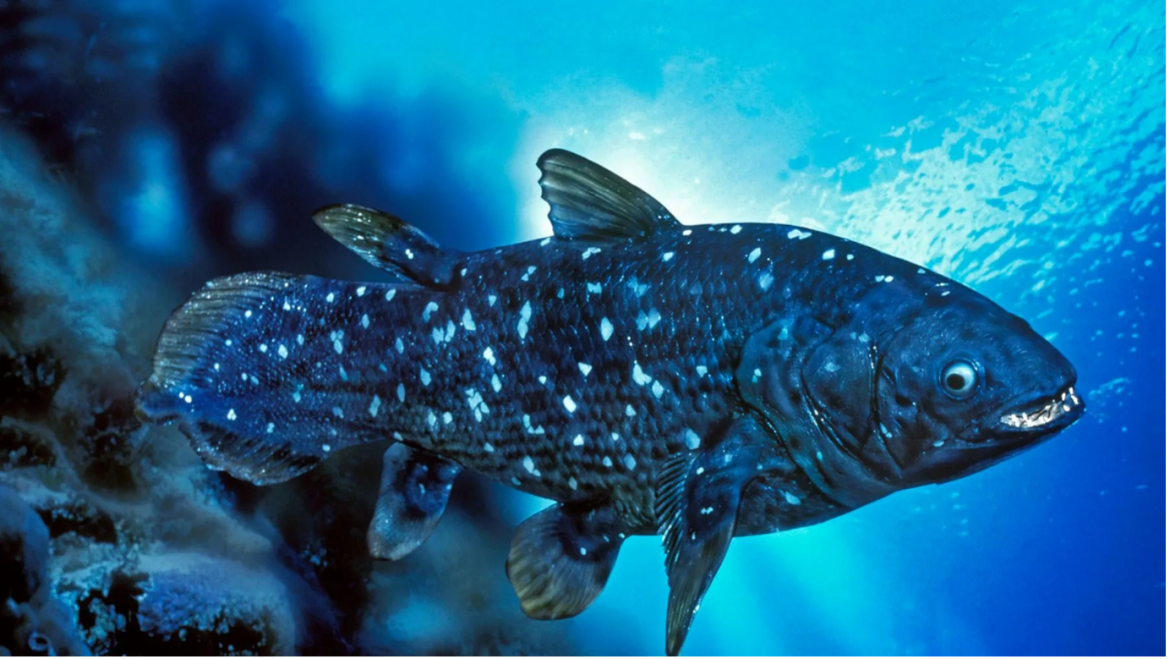The coelacanth, an ancient fish believed to have gone extinct 65–70 million years ago, made an unexpected return to the world of the living. Once thought to be a relic of the past, this prehistoric creature was rediscovered in 1938 near a small South African fishing village, sparking astonishment and intrigue within the global scientific community.
The coelacanth dates back an astonishing 400 million years, making it one of the oldest known species still in existence. Its unaltered form over millennia classifies it as part of the “Lazarus taxon,” a term for species that vanish from the fossil record only to reappear unchanged millions of years later.
This marine wonder was first rediscovered when a local fisherman unknowingly caught it near the Chalumna River. The specimen, handed to museum worker Marjorie Courtenay-Latimer, caught the attention of marine expert James Leonard Brierly Smith. His famous telegram response—”Preserve the skeleton and gills!”—marked the beginning of a historic revelation.
Why Is It So Special?
- Evolutionary Links: The coelacanth’s pectoral fins resemble early limb structures, offering a glimpse into the evolutionary leap from aquatic to terrestrial life.
- Deep-Sea Survival: Residing in underwater caves at depths that deter predators and drastic environmental changes, coelacanths have adapted perfectly to their stable habitats.
- Efficient Metabolism: This species can endure food-scarce conditions, another testament to its resilience.
After the initial discovery in South Africa, another specimen surfaced 15 years later near the Comoro Islands. Further sightings in Indonesia during the 1990s led to the identification of two distinct species:
- Western Indian Ocean coelacanth (Latimeria chalumnae)
- Indonesian coelacanth (Latimeria menadoensis)
Scientists attribute its survival to:
- Stable habitats in deep-sea caves.
- Unique physiological traits that support navigation in complex environments.
- A slow metabolism that sustains life even when food is scarce.
The coelacanth’s story is more than a tale of survival; it’s a window into Earth’s distant past and a symbol of resilience. As scientists continue to study these enigmatic creatures, they uncover secrets about evolution, biodiversity, and marine ecosystems.
The coelacanth reminds us that the natural world holds mysteries waiting to be discovered, inspiring awe and respect for life’s enduring adaptability.
Source: UNIONRAYO

